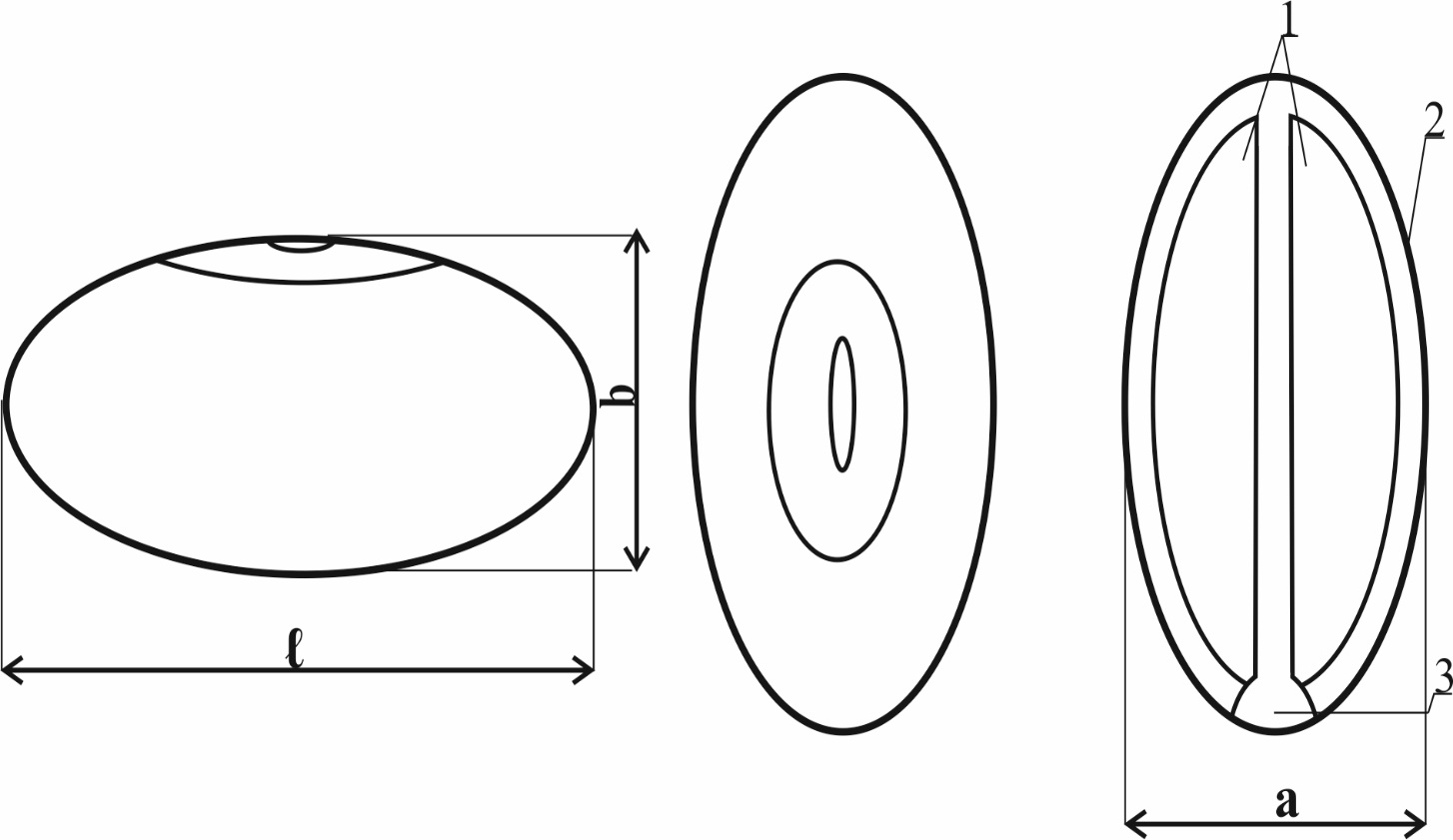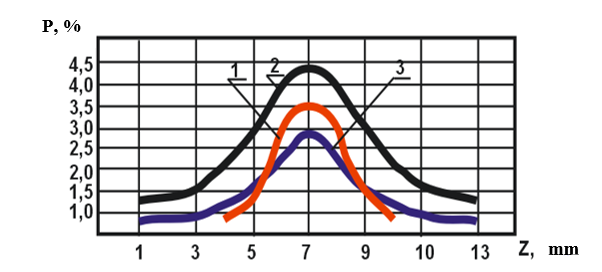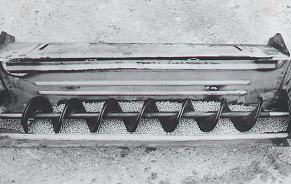A STUDY OF MECHANICAL DAMAGE AND SEPARATION OF SOYA SEEDS ALONG THE LENGTH OF THRESHING MACHINE OF TWO-PHASE THRESHING MACHINE
A STUDY OF MECHANICAL DAMAGE AND SEPARATION OF SOYA SEEDS ALONG THE LENGTH OF THRESHING MACHINE OF TWO-PHASE THRESHING MACHINE
Abstract
An important role in increasing soybean production is to reduce indirect crop losses from grain crushing, especially when harvesting and processing crops. At the same time, the increase in soybean production in the Amur Region due to the expansion of sown areas has exhausted its capabilities, therefore, it is necessary to identify and introduce innovative technologies for obtaining high-quality and more productive seeds. It has been established that soy has a biological difference – the quality of seeds. Seeds, the formation of which begins earlier, have increased growth energy, germination, productivity, higher absolute weight. The technology of extraction and collection of these seeds has been developed (patents: No. 2679508 of 27.10.2017, No. 2748978 of 18.08.2020, No. 2765580 of 02.04.2021), is simple, low-ore intensive and requires modernization of the combine for harvesting seed plots, due to significant damage and poor quality of seeds sown in the region (on average, up to 20% are sown with substandard seeds).
1. Introduction
Soybean grain is a solid, elastoplastic inhomogeneous body containing a number of organic and inorganic substances.
The grain is covered with a dense peel (seed shell) protecting its inner part. Soybean shell makes up 7% of the total grain weight and consists of three layers: palisade, hypoderm and nutrient tissue
.When creating new working elements of transportation devices, it is necessary to select the material, operating modes, process gaps, curvature of the working element and other indicators of each structural element. In order to do that, without the risk of grain destruction or change in shape, these working elements resist the action of external forces transmitted to it from parts of the structure and the mass of the moved grain and during the power interaction of seeds with the working elements of threshing and transporting devices, the grain should not be overloaded above its natural strength limits. Failure to comply with this requirement leads to local or general destruction of seeds – their micro damage and crushing
.
Figure 1 - Soybean grain
Note: 1 – cotyledons, 2 – seed shell, 3 – embryo, l – length, b – width, a – soybean thickness
2. Methods
From the action of the edge of the screw due to the friction force and the force of its own weight, the grain, in contact with the screw, receives a rotational motion pulse. Due to this, in a pinched state, it is rolled over the casing from the thickness position to the position of its width or length, but at the same time remaining in a gap of a certain size equal to the grain thickness. When compressed with the rolling of soybean grain in the screw, it will experience pressure from the screw and casing.
When the soybean grain is pinched between the screw and the casing in the moving screw, the resulting pressure on the soybean grain from the side of the screw according to the theory of contact stresses exceeds the elasticity of the grain by about 50 times or more, so the soybean grain is intensively destroyed.

Figure 2 - Forces acting on soybean grain in a screw conveyor
3. Main results

Figure 3 - Change in value of damage to soybean grain by horizontal screw depending on gap between screw and casing
Note: 1 – theoretical data, 2 – experimental steel screw data, 3 – data by experimental polyethylene screw
Table 1 - Probability of pinching and mechanical damage soybean grains in a screw conveyor
Size gap | Probability of pinching and damage | |||
by thickness | by width | in length | full probability | |
0,0052 | 0,0466 | - | - | 0,0466 |
0,0054 | 0,0924 | - | - | 0,0924 |
0,0056 | 0,1571 | 0,0252 | - | 0,1823 |
0,0058 | 0,2295 | 0,0499 | - | 0,2794 |
0,0006 | 0,2881 | 0,0984 | - | 0,3845 |
0,0062 | 0,3108 | 0,1660 | 0,0609 | 0,5377 |
0,0064 | 0,2881 | 0,2381 | 0,0863 | 0,6125 |
0,0066 | 0,2295 | 0,2734 | 0,1151 | 0,6180 |
0,0068 | 0,1571 | 0,2736 | 0,1616 | 0,5923 |
0,0070 | 0,0924 | 0,2734 | 0,1894 | 0,5552 |
0,0072 | 0,0466 | 0,2381 | 0,1915 | 0,4762 |
0,0074 | - | 0,1660 | 0,1894 | 0,3634 |
0,0078 | - | 0,0964 | 0,1616 | 0,2879 |
0,0080 | - | 0,0499 | 0,1151 | 0,2293 |
0,0082 | - | 0,0252 | 0,0863 | 0,1868 |
0,0084 | - | - | 0,0609 | 0,1151 |
0,0086 | - | - | - | 0,0863 |
0,0088 | - | - | - | 0,0609 |
From the conducted analysis of the literature, both domestic and foreign authors at the moment, the following conclusions can be drawn:
the working elements of the combine do not equally effect the grain in the process of breaking its connection with the flaps of beans and damage it (table 2).
Analyzing the work on damage to soybean seeds, the working organs on the power activity of the effect are divided into two groups:
a) working bodies performing grain extraction from straw heap;
b) working bodies that separate grain from grain heap and transport it.
Studying this, it can be assumed that the first group accounts for more than 59% of the damaged grain to the total amount of damaged. That is, in terms of the amount of damaged grain, the group of units of the threshing-separation device combine is in the first place, and from this it follows that its structural and technological reassessment is an urgent task.
Table 2 - Damage to soybean seeds by working elements of the combine
No. n /n | Name of working bodies | Grain damage, % | |
to the soaked grain | increasing damage | ||
1 | Inclined plane box kamera | 0,53 | 0,53 |
2 | One drum | 5,56 | 6,09 |
3 | Interveinal biter-chipper | 0,61 | 6,7 |
4 | Second drum | 2,89 | 9,59 |
5 | Release biter-chipper | 0,49 | 10,08 |
6 | Straw shake | 0,07 | 10,15 |
7 | Cleaning | 0,24 | 10,39 |
8 | Grain screw | 2,19 | 12,58 |
9 | Grain passed | 1,85 | 14,43 |
10 | Ear screw | 1,23 | 15,66 |
11 | Passed ear | 1,09 | 16,75 |
12 | Grain screw small | 0,85 | 17,6 |
Total: | 17,6 | ||
1. Theoretical data;
2. Experimental steel screw;
3. With an experimental polyethylene screw.
The analytical relationship shows that with an increase in the unit volume of the portions of soybean grain transferred, the amount of damage decreases, so it is rational to use large diameter screws in screw conveyors, while slightly reducing the speed of grain movement.

Figure 4 - Nomogram for determining the amount of damage to soybean grain in the screw depending on the gap between the screw and the casing, diameter, length and speed of rotation
Note: θ – the angle of inclination of the screw axis to the horizontal, r – screw radius, α – helical conveyor helical line lifting angle, ω0 – angular velocity, f1 и f2 – friction coefficients of grain against materials of working elements, Z – the size of the gap between the screw and the screw casing
The use of a softer elastic polyethylene having a lower coefficient of friction as a structural member of the screw will reduce the degree of tightening, pinching and mechanical damage to the soybean, but the likelihood of damage remains.

Figure 5 - Passive layer of soybean grain remaining in a serial screw conveyor with a gap between the screw and the casing equal to 7-7,2 mm
Analyzing the obtained analytical dependencies, we can conclude from this that with an increase in the unit volume of portions of transported grain, the amount of damage decreases, therefore, it is rational to use volumetric scrapers in scraper conveyors according to the developed and obtained patents (No. 2004469, No. 2038995).
Among the wide variety of transporters for moving bulk loads, belt transporters are significantly common. Simple design, less energy consumption in comparison with other conveyors, absence of loading and pinching devices, with rational loading, unloading and movement of grain, it is possible to give preference to the use of a brush-belt conveyor, which can ensure the movement of the grain released in the combine during two-phase threshing of biologically full grain practically without mechanical damage.
It follows from the above that the desire to reduce grain damage during soybean harvesting in various ways does not lead to a solution to the problem of obtaining high-quality seeds, since their biological diversity was not taken into account. Therefore, the problem of reducing grain injury should be solved inextricably with the problem of isolating biologically valuable soybean seeds during its threshing.
4. Conclusion
1. The design of a prototype of a combine harvester based on the Yenisei 1200 with the separation of a composite heap from under the second threshing drum and its supply to the second half of the sieve mill by means of an additional finishing board 1000 mm long ensures the separation of soybean seeds into the first (from under the I threshing drum) and the second (from under the II threshing drum) fraction in a ratio of 55:45%.
2. The objective of further studies of the pilot sample of the combine harvester is to optimize its operational parameters in terms of providing seed conditions for crushing the first fraction not more than 2,5% and for the second fraction for seed purity not less than 95%.
